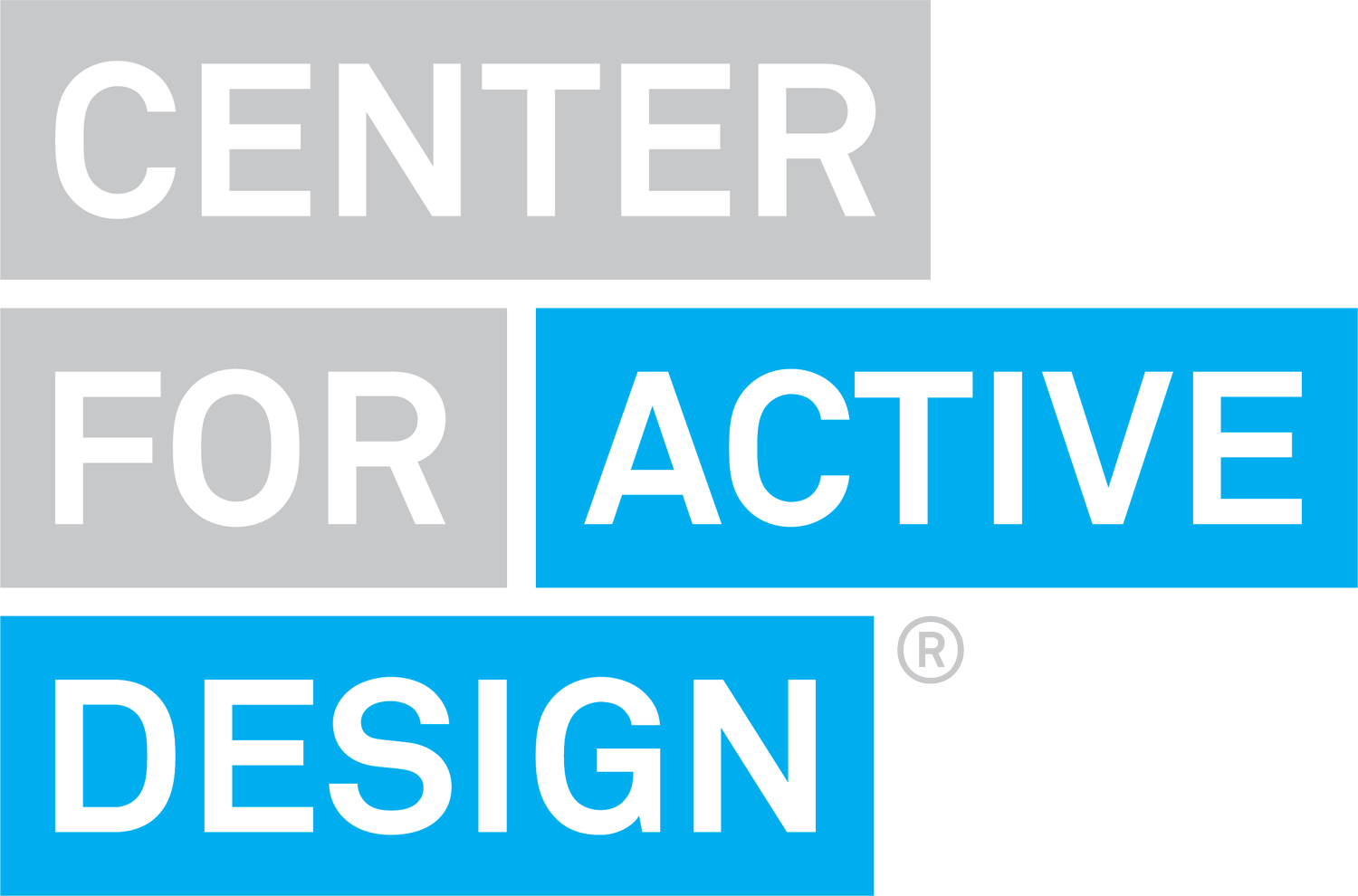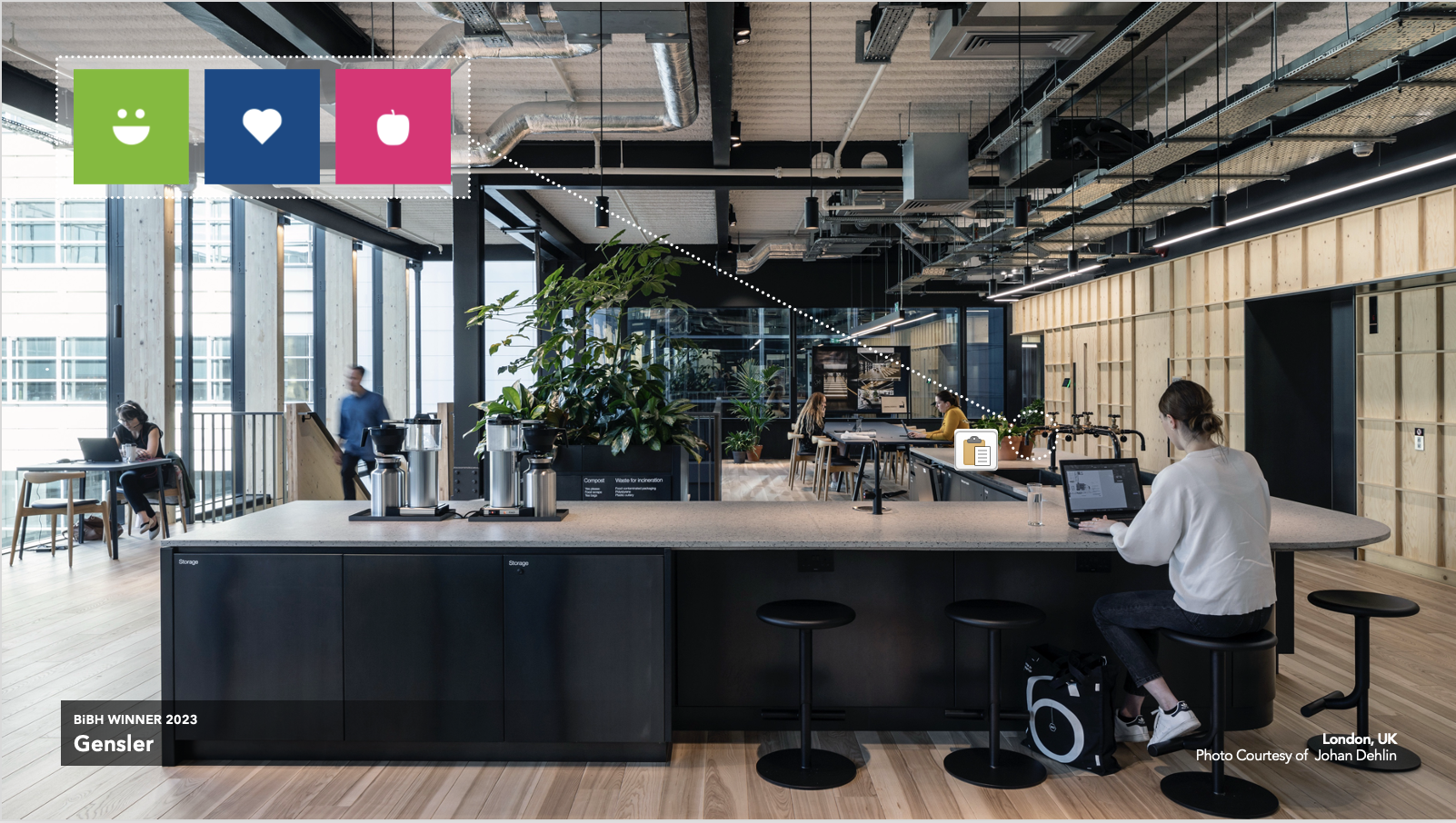
Translating Research
Thai Stock Exchange | Photo Courtesy of Building & Living Care Consulting Co., Ltd.The Center for Active Design translates research into action to advance its mission of fostering healthier, more resilient communities.
For more details about our past research efforts, please visit our publications page.
When we started this journey, we faced the challenge of convincing a skeptical public about the critical role the built environment plays in shaping our health and well-being. Today, with a robust and growing evidence base, this connection is widely recognized. However, our mission is far from complete. We remain engaged with academics, policymakers, and other thought leaders, continually exploring innovative ways to expand the movement for designing communities that prioritize health and well-being.
The Fitwel Standard
The Center for Active Design provides the research backing for the Fitwel Standard. CfAD provides tailored scorecards for existing and new buildings and sites to optimize the unique opportunities for every project to receive the Fitwel healthy building certification—whether it’s a single floor build-out or a large-scale development. The Fitwel Standard include 150+ evidence-based design and operational strategies that enhance buildings and sites by addressing a broad range of health behaviors and risks. Those strategies are then organized into seven Health Impact Categories, to better understand how different aspects of the built environment impact human health.
Fitwel Strategies
Each strategy included in the Fitwel Standard is associated with unique point allocations based on the strength of associated evidence and the demonstrated impact on occupant health. This means that strategies with stronger, multi-faceted impacts receive more points, resulting in a healthy office or living environment.
Fitwel addresses health as an interconnected system – with no single dominant category or area of focus – and, as such, all strategies are voluntary, with no individual prerequisites.

Get Certified Today!
Photo Courtesy of Kilroy RealtyFitwel’s Seven Health Impact Categories
Fitwel’s Health Impact Categories were developed based on research conducted by the Center for Active Design, which analyzed how the built environment influences the social component of ESG (Environmental, Social, and Governance). This research was distilled into seven key categories, forming the foundation of Fitwel’s certification system.
Enhances Access to Healthy Foods
Strategies that enhance access to healthy foods provide occupants with expanded availability to fruits, vegetables, and other nutritious food options by diversifying the outlets and sources of healthier food options, promoting healthier choices, and reducing cost of healthier options through pricing incentives.
Impacts Surrounding Community Health
Strategies that impact surrounding community health broaden the impact of the project past the health of on-site occupants, reaching those who live, work, play, or learn in the neighboring areas.
Increases Physical Activity
Strategies that increase physical activity incorporate opportunities for movement into everyday life whether through encouraging active transportation, promoting stair use, or expanding access to indoor and outdoor fitness areas and equipment.
Instills Feelings of Well-Being
Strategies that instill feelings of well-being promote inclusion, relaxation, and perceptions of safety through rejuvenating and clean spaces, an enhanced connection to nature, and opportunities for social engagement.
Promotes Occupant Safety
Strategies that promote occupant safety decrease risk of crime and injury, protect bicyclists and pedestrians from vehicular traffic, and increase stair safety.
Reduces Morbidity and Absenteeism
Strategies that reduce morbidity and absenteeism promote decreased rates of chronic disease and mental health conditions, resulting in a healthy office with reductions in disease transmission and fewer missed days of work.
Promotes Social Equity
Strategies that support social equity for vulnerable populations ensure that a range of populations, including children, elderly, disabled, or socio-economically disadvantaged persons have increased access to health-promoting opportunities whether through universal accessibility, pricing incentives for healthier food options, targeted health-promoting amenities, or increased access to public transportation.
Fitwel’s HIC’s in Action
Research-Informed Action
In addition to managing the Fitwel Standard, the Center for Active Design collaborates with stakeholders across the built environment to bridge the gap between research and practices equipping practitioners with actionable guidance to create healthier spaces.
Here are a few examples:
-

Healthcare: A Cure for housing
CfAD + The Kresge Foundation identify ten best practices for investing in affordable housing, drawing from healthcare industry leaders at the forefront of tackling access to affordable housing as a way to impact health.
-

Building Health Places: Toolkit
CfAD + The Urban Land Institute provide this toolkit as a practical guide for real estate developers that expands on the growing practice of using health evidence to inform design thinking.
-

Assembly: Civic Design Guidelines
A playbook for creating well-designed and well-maintained public spaces as a force for building trust and healing divisions in local communities
-

A New Investor Consensus
The benchmark report features findings from an analysis of 60 QuadReal properties pointing to the positive outcomes that health and wellbeing strategies have on tenant satisfaction and financial outcomes.
Learn More About CfAD’s Translation of Research into Actionable Solutions











